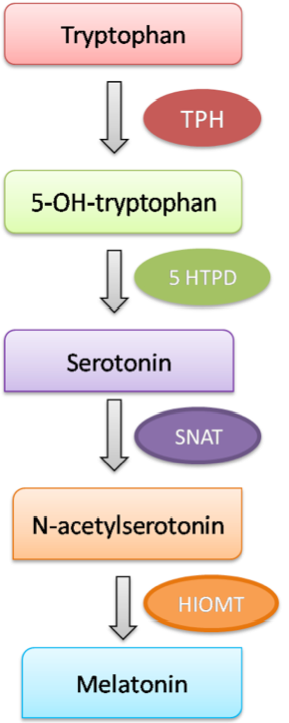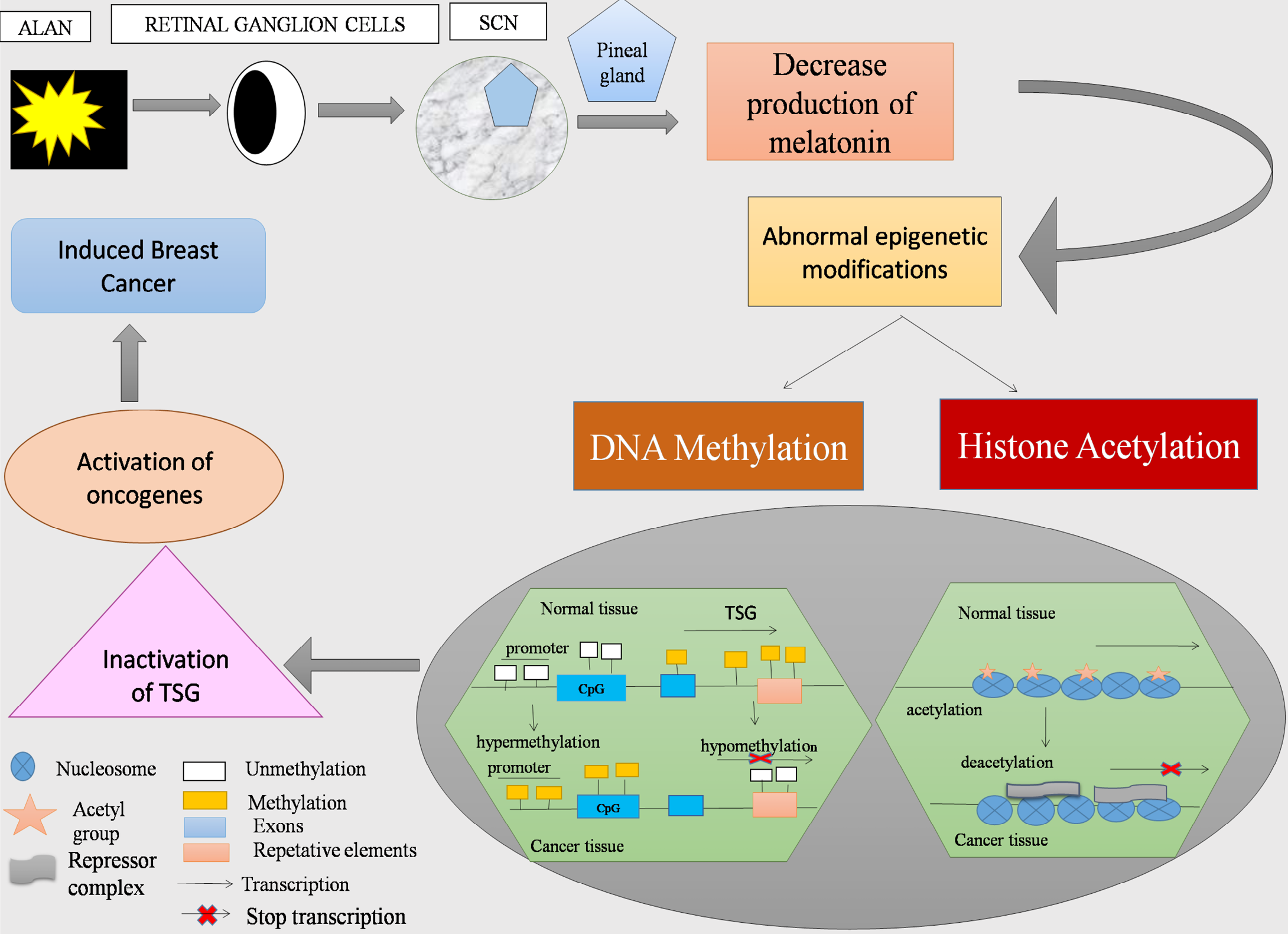Epigenetics: A Bridge between Artificial Light at Night and Breast Cancer
Epigenetics: A Bridge between Artificial Light at Night and Breast Cancer
Hafiza Sadaf Zahra1, Asia Iqbal2, Sayyeda Hira Hassan1, Hafiz Abdullah Shakir1*, Muhammad Khan1*, Muhammad Irfan3, Chaman Ara1, Shaukat Ali4
Synthesis of MLT. MLT synthesis takes place in pineal gland. Pineal glands uptake tryptophan and converts it into MLT through five enzymes catalyzed reactions. The diagram represents the sequential reactions and enzymes involved in biosynthesis of MLT. TPH: Tryptophan hydroxylase, 5-HTPD: 5-Hydroxytryptophan decarboxylase, SNAT: Serotonin N-acetyltransferase, HIOMT: hydroxyindole-O-methyl transferase).
ALAN induced BC: MLT synthesis take place in pineal gland at night, however; ALAN reduced its production which results in abnormal epigenetic changes including DNA methylation and Histone acetylation. The promoter region is unmethylated and acetylated in normal tissue of TSG while it is methylated and deacetylated in cancer tissues. As a result, TSG become inactive and oncogenes become active leading to BC induction.










